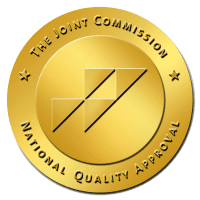It’s no secret that alcohol takes a massive toll on the body. Research shows that people who misuse alcohol have much greater risks for health conditions like liver disease and cancer. In fact, the most recent data from 2021 showed that 47.4% of liver disease deaths and 5.6% of all cancer cases involved alcohol consumption.
With these health risks, you might ask the question, is alcohol a controlled substance? Are there regulations in place? Learning more about alcohol regulations and the impacts of alcohol use can help you to help yourself or a loved one better navigate the path toward recovery.
Read on to learn what you need to know about alcohol and controlled substances, as well as alcohol use disorder and treatment options.
What Is a Controlled Substance?
First, it’s best to learn more about what a controlled substance actually is. Controlled substances are pharmaceutical and non-pharmaceutical drugs the US federal government regulates due to their risks.
There are different drug schedules of controlled substances to be aware of, which are grouped according to their potential for addiction. These substances are classified in the Controlled Substances Act (CSA).
Scheduled controlled substance examples include:
Schedule I
Schedule I drugs have a high potential for abuse and don’t have any accepted medical use. They include drugs like heroin and ecstasy.
Schedule II
Schedule II consists of substances, drugs, or chemicals that have a high potential for abuse which would lead to physical dependence. Some Schedule II drugs are approved for medical use in specific circumstances.
Examples of Schedule II drugs include:
- Cocaine
- Fentanyl
- Methadone
- Adderall
- Dilaudid
- Oxycodone
- Demerol
- Methamphetamine
Combination pain medications like Vicodin are also considered Schedule II drugs.
Schedule III
Schedule III drugs are defined as chemicals, drugs, or substances that have a low to moderate potential for dependence. However, the abuse potential with Schedule III drugs is less compared to Schedule I and II drugs.
Examples of Schedule III drugs include:
- Testosterone
- Ketamine
- Anabolic steroids
Also, products with 90 milligrams or less of codeine are considered Schedule III drugs.
Schedule IV
Schedule IV drugs, chemicals, or substances have a low risk of dependence and abuse. Common examples of Schedule IV drugs include anxiety, sleep, and pain medications like:
- Ativan
- Valium
- Xanax
- Ambien
- Tramadol
- Darvocet
- Soma
Schedule V
Schedule V drugs have a much lower potential for abuse and have very limited quantities of narcotics. Usually, Schedule V drugs are for issues like coughs and diarrhea.
Common Schedule V drugs include Robitussin AC, Lyrica, and Lomotil.
Is Alcohol a Controlled Substance?
In the United States, alcohol isn’t considered a controlled or regulated substance, so you won’t find an alcohol classification like with other substances.
However, its distribution, production, and sales are regulated by the federal government due to its health risks.
These guidelines are intended to prevent use that becomes harmful.
Alcohol Laws and Consumption Guidelines
In the United States, current dietary guidelines state that men should limit their alcohol consumption to less than two drinks a day. Women on the other hand should consume one drink or less a day.
In addition, you shouldn’t drink alcohol at all if:
- You’re under the legal drinking age of 21
- You think you might be pregnant
- You are pregnant
- You’re taking medications that you know interact with alcohol
- You’re in recovery from alcohol use disorder
- You’re not able to control how much alcohol you drink
- You have to operate heavy machinery
Finally, it’s no secret that it’s against the law to operate a vehicle if you have alcohol in your system.
How Does Short-Term Alcohol Use Affect You?
These regulations are in effect because of the way using alcohol can impact your body. These effects can happen even if you’re only drinking short-term. After you start drinking, you’ll experience effects like:
- Lowered inhibitions
- Mood changes
- Impulsive behaviors
- Euphoric feelings
- Dizziness
- Slurred speech
- Loss of coordination
- Trouble focusing
- Blackouts
You can start experiencing lowered inhibitions after just one drink while for other people, it may take more.
Most people also experience dehydration-related symptoms like headache, dizziness, and nausea. Usually, this occurs the next morning as a hangover effect and may not last long.
What Long-Term Effects Does Alcohol Have?
It’s essential to remember that using alcohol extends far beyond short-term effects.
Using alcohol long-term can cause changes in mood like irritability and anxiety. You’ll also have difficulty focusing on your usual tasks and experience more conflicts in your relationships.
Long-term use also causes chronic inflammation in your body. This can impact processes like digestion since your pancreas can become inflamed. It eventually impacts your immune system, causing you to become sick more often.
This inflammation extends to other body systems, causing other changes like:
- High blood pressure
- Stroke
- Heart attack
- Heart failure
- Heart disease
- Ulcers
- Gas
- Bloating
- Diarrhea
You can also become dependent on alcohol. This means your brain and body get used to alcohol’s effects. Once you stop drinking, you can start experiencing intense withdrawal symptoms like cravings, anxiety, tremors, sweating, and hallucinations.
What Is Alcohol Use Disorder?
Alcohol use disorder (AUD) is a medical condition that involves frequent or heavy alcohol consumption. This consumption continues despite the physical and emotional distress it causes.
People with AUD can’t stop drinking even when their families, careers, and homes are at risk.
AUD impacts brain function and requires various medical and psychological treatments to control the symptoms long-term. With the right behavioral therapies and withdrawal treatments, people with AUD can live long and productive lives.
Symptoms of AUD
There are specific signs of AUD to watch out for in your own behaviors or the behaviors of a loved one. These signs include:
- Frequent hangovers
- Drinking more than you planned to
- Feeling cranky or irritable when not drinking
- Frequent alcohol cravings
- Obsessing about alcohol
- Not being able to cut back your use despite wanting to
- Not being able to stop once you start drinking
You can also find yourself getting into dangerous situations like drinking and driving or falling and injuring yourself. You’ll also spend a lot of time recovering from drinking.
Alcohol Use Disorder Treatment
AUD treatment is a multi-step process that can guide you toward recovery and change your life.
It gives you the support you need during the initial phases of withdrawal and beyond. The different phases include:
Detox
Detox is the first major step in this process and it’s crucial to realize it’s much more than simply stopping drinking.
This is because as soon as alcohol isn’t present in your body, you’ll start to experience uncomfortable withdrawal symptoms and strong cravings. It’s difficult to manage these symptoms and cravings, so support is necessary.
Detox programs like Purpose Healing Center in Phoenix have a medical detox program that helps you through this process. You’ll receive medications and 24/7 support during the stages of detox.
Medical detox allows you to be as comfortable as possible during the process and prepare for the next phase of your treatment. You’ll receive a custom treatment plan, allowing you to chart your own course toward recovery.
Treatment programs include:
Residential Inpatient Rehab Program
Residential inpatient rehab programs give you the highest level of care possible. You’ll live at the facility during treatment which allows you to focus solely on treatment. Residential programs typically last 30, 60, or 90 days, depending on your individual needs.
Many people with substance use disorders also have a co-occurring mental health disorder like anxiety or depression. Therefore you’ll receive treatment for both your mental health disorder and addiction during your program.
You’ll receive a range of therapies during treatment:
- Cognitive behavioral therapy (CBT)
- Mindfulness training
- Medication management
- Rational emotive therapy
- Family therapy
- Relapse prevention
- Group therapy like AA
- Meditation
- Yoga
Treatment also consists of discharge planning which involves working on life skills and employment barriers.
Outpatient Programs
There are also different outpatient programs you can attend which include a partial hospitalization program (PHP), and intensive outpatient treatment (IOP).
PHP is a higher level of care that requires you to attend therapy five days a week, up to six hours daily. However, you can live at home during therapy.
IOPs give you more flexibility, and you’ll typically attend therapy for at least 9 to 10 hours weekly. You can usually attend IOP therapy sessions days, evenings, or weekends and they allow you time to work and rebuild your life.
These programs are best for people who still need structured treatment but are ready to leave a 24-hour level of care.
Learn More About Alcohol Addiction Treatment Options
Now that you know the answer to the question “Is alcohol a controlled substance,” you’ll better understand why it has these specific guidelines in place.
You can turn to the caring professionals at Purpose Healing Center for your individualized treatment needs. We have locations in Scottsdale and Phoenix, AZ, and provide custom treatment options that will give you a new start in life. We provide a variety of treatment options for alcohol and drug abuse that give you the support you need. Our programs include detox, residential inpatient, PHP, and IOP programs.
Make sure to contact us today to learn more about our alcohol treatment programs and start charting your course toward sober living.



